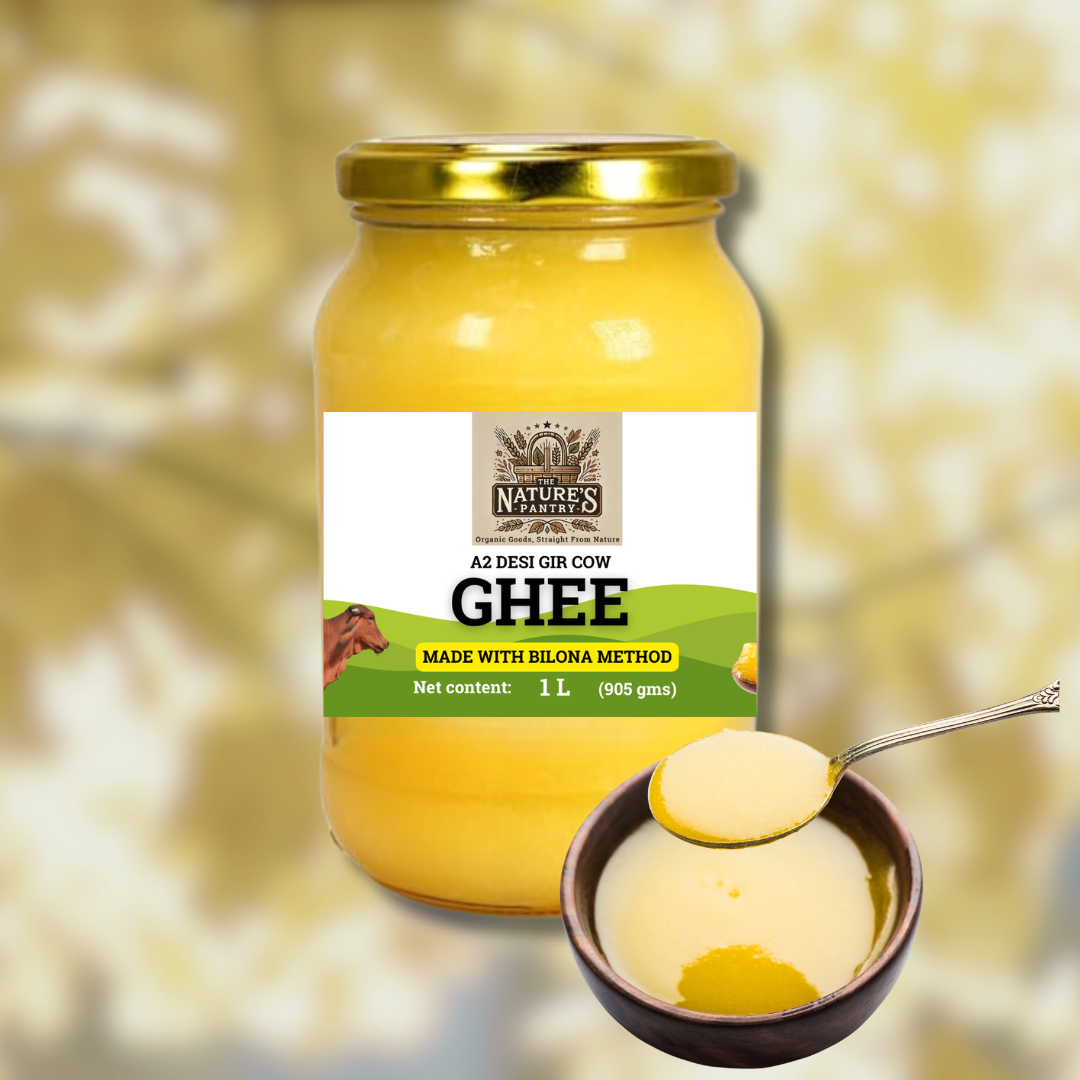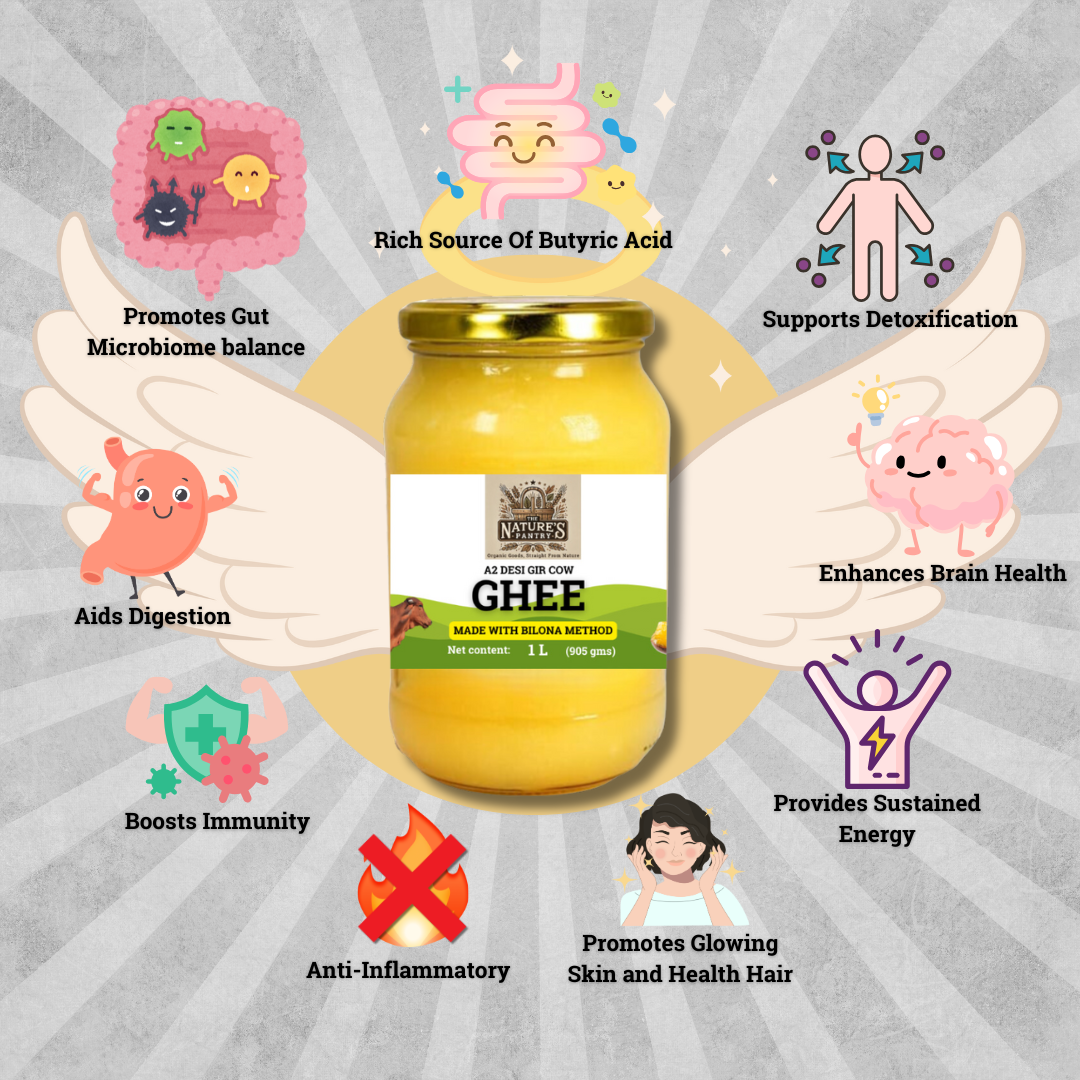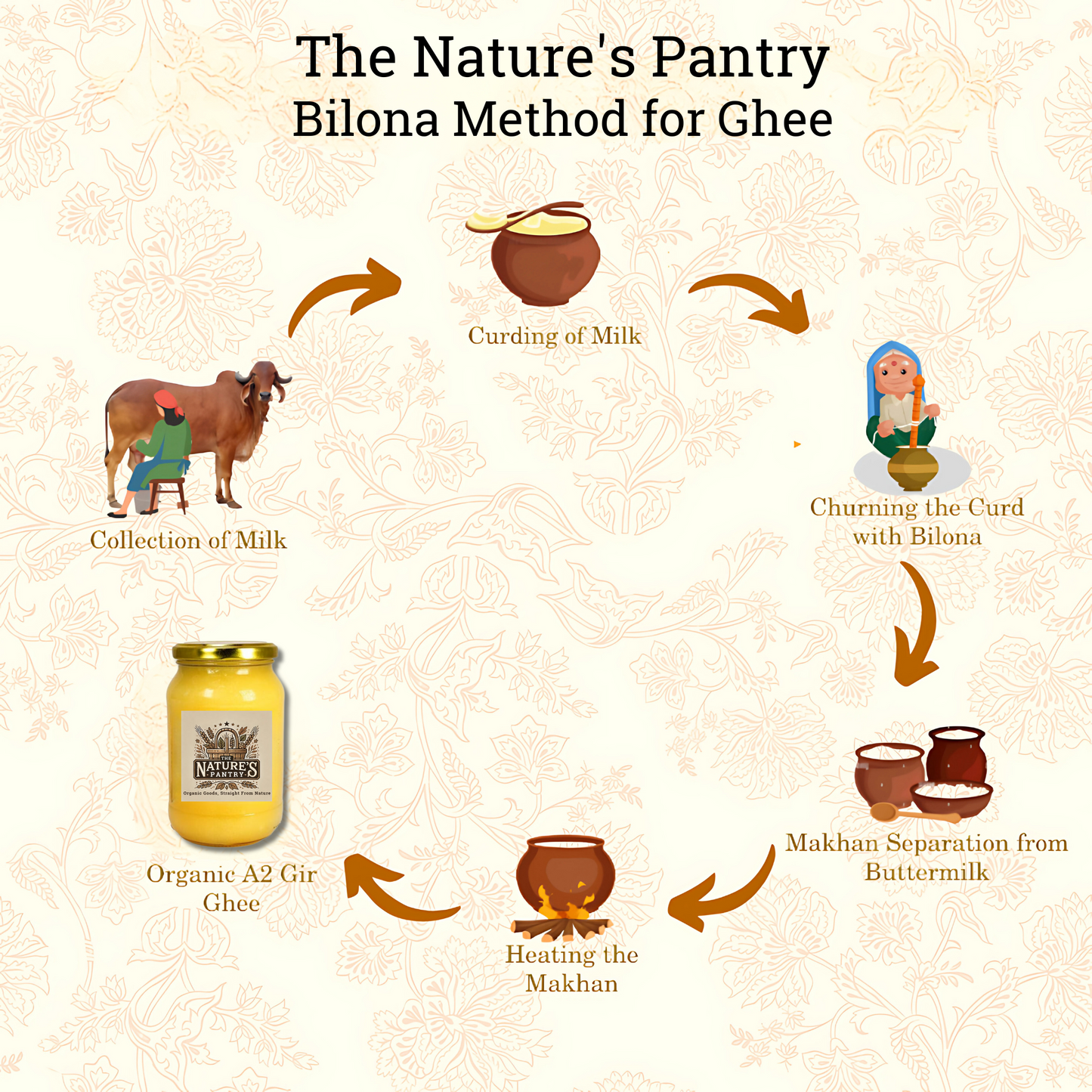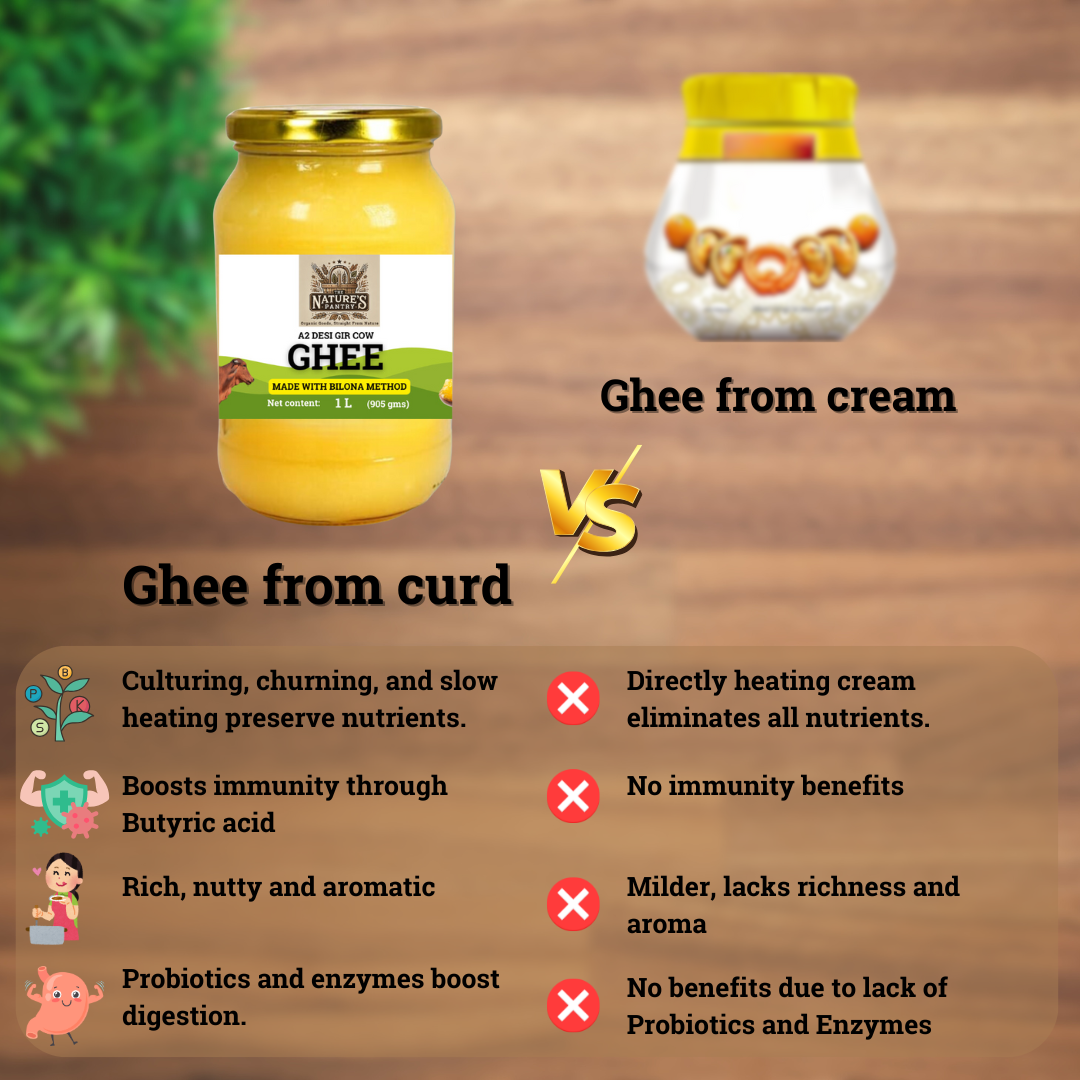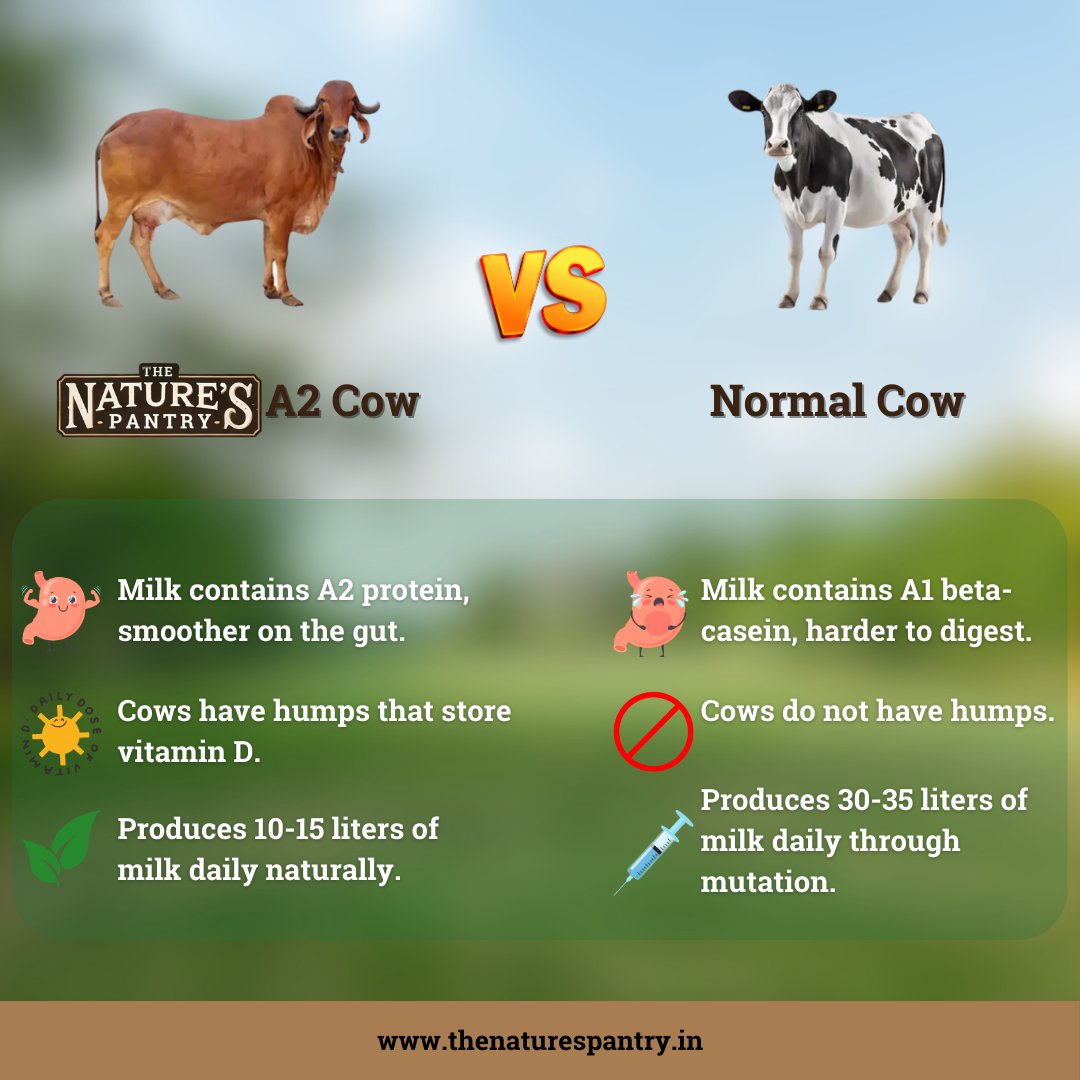Is Your Homemade Ghee Missing Out on Maximum Nutrition? Discover a Better Alternative!
Share

Ghee is an integral part of Indian kitchens, valued for its rich flavor and numerous health benefits. Many households prefer making ghee at home, believing it to be pure and nutritious. However, not all homemade ghee retains its full nutritional value. Understanding the right method to prepare ghee can help ensure maximum nutrition.
The Common Way to Make Ghee at Home
Most people make ghee at home by collecting malai (cream) from boiled milk over several days. This malai is then churned into butter and heated to produce ghee. While this method works, it often lacks the traditional touch that enhances its nutrition.
Shortcomings of the Common Method
- Milk Source Matters: Homemade ghee is often made from commercially available milk, which may come from cows that are not grass-fed or of indigenous breeds like the Gir cow. Such milk lacks essential nutrients, affecting the quality of ghee.
- Churning Process: The traditional Bilona method, where curd is churned to extract butter before making ghee, ensures better preservation of nutrients. The common household method of directly heating butter skips this step, reducing the medicinal properties of ghee.
- Heating Technique: Many people overheat or underheat butter while making ghee. Overheating can destroy essential vitamins like A, D, E, and K, while underheating may leave moisture, affecting shelf life and taste.
- Lack of Slow Cooking: The Bilona method involves slow cooking, which enhances the aroma, taste, and nutritional benefits of ghee. Rushed methods often fail to bring out the full potential of ghee.
The Best Way to Ensure Maximum Nutrition in Homemade Ghee
- Use A2 Milk from Indigenous Cows: Choose milk from desi cows like the Gir cow to get the best quality ghee.
- Follow the Bilona Method: Convert milk into curd, churn it into butter, and then slow-cook it to make ghee. This traditional approach retains essential nutrients and enhances digestibility.
- Use Low Heat and Slow Cooking: Cooking ghee on a low flame for a longer duration helps retain its nutrients while bringing out its characteristic aroma.
- Store Properly: Always store ghee in a glass or steel container in a cool, dark place to prevent rancidity.
Save Time with The Nature’s Pantry Ghee
While making ghee at home is a wonderful practice, it requires patience, effort, and the right ingredients. To save time without compromising on nutrition, you can opt for The Nature’s Pantry A2 Gir Cow Ghee, made using the Bilona method. Our ghee is sourced from free-grazing Gir cows and prepared through traditional slow-cooking techniques to ensure maximum purity and nutrition.
Enjoy the benefits of nutrient-rich ghee without the hassle—bring home The Nature’s Pantry Ghee today!


